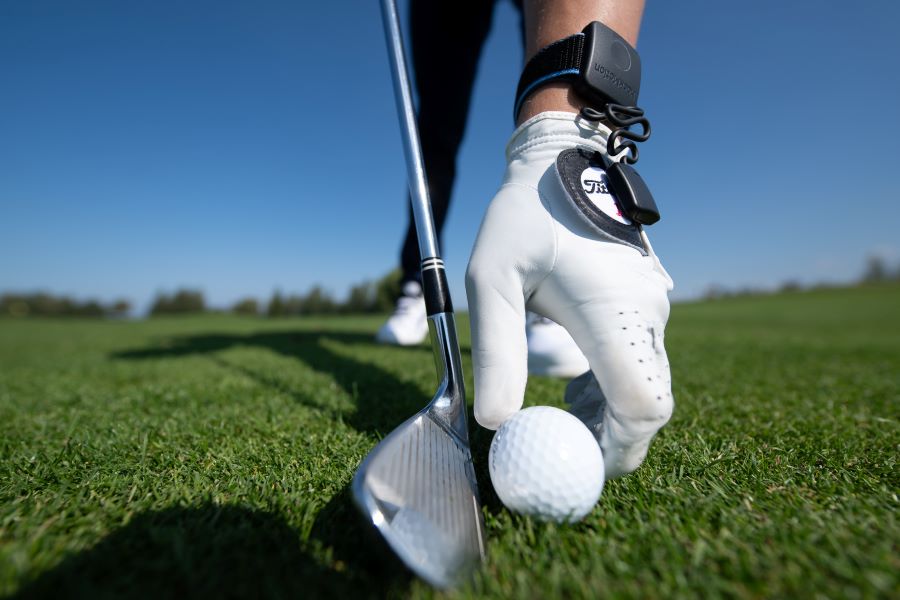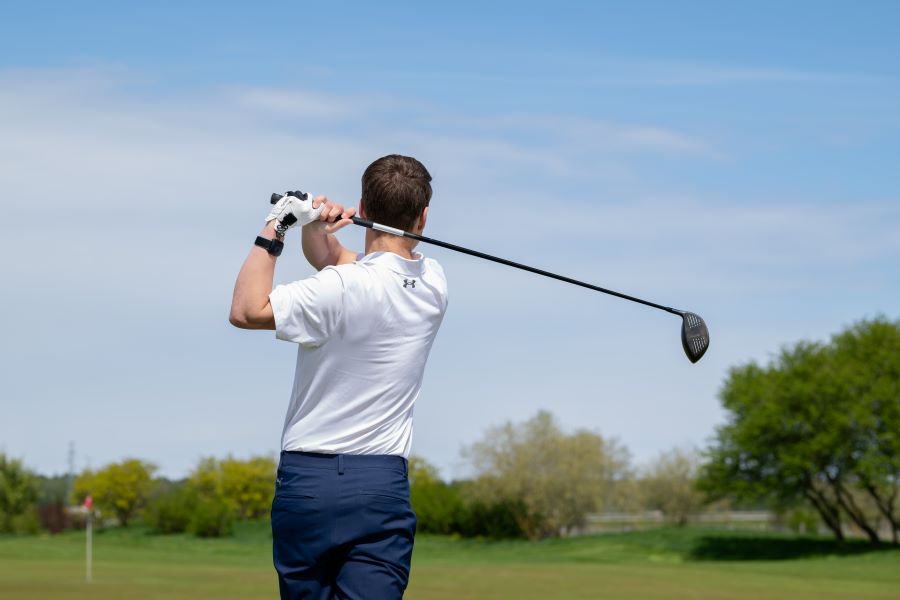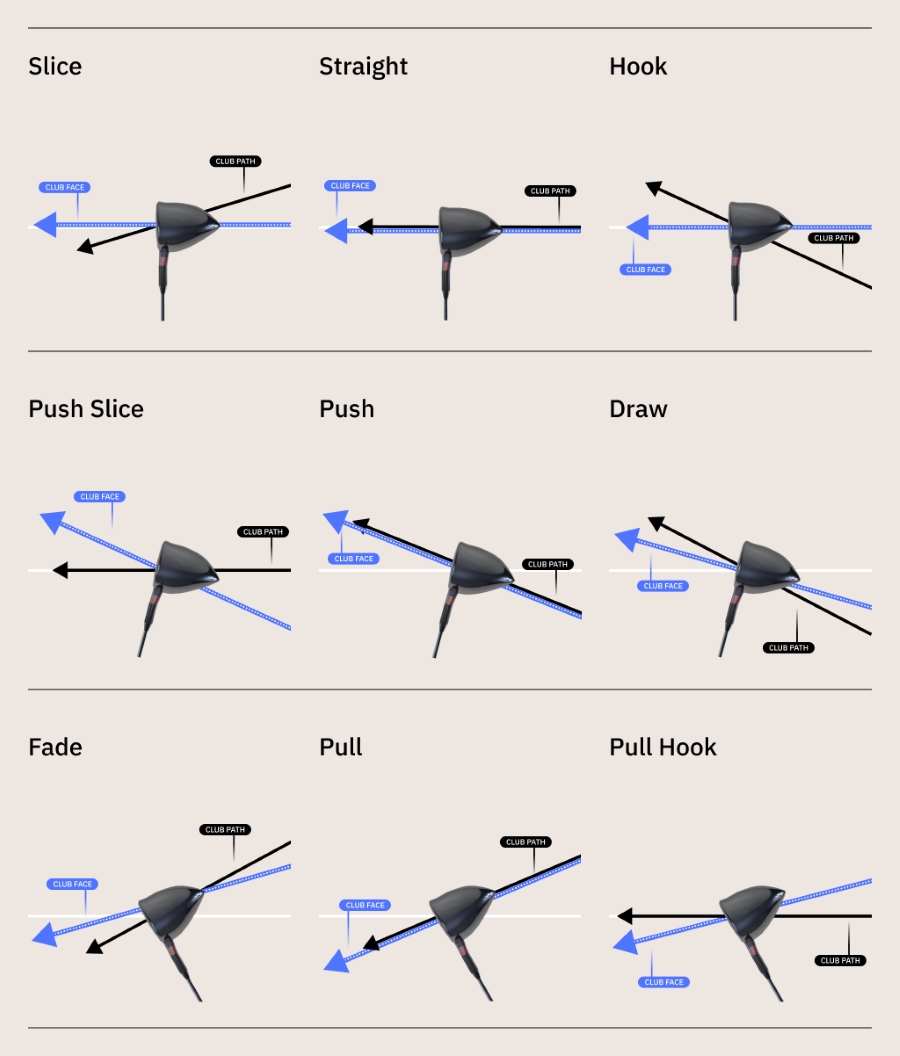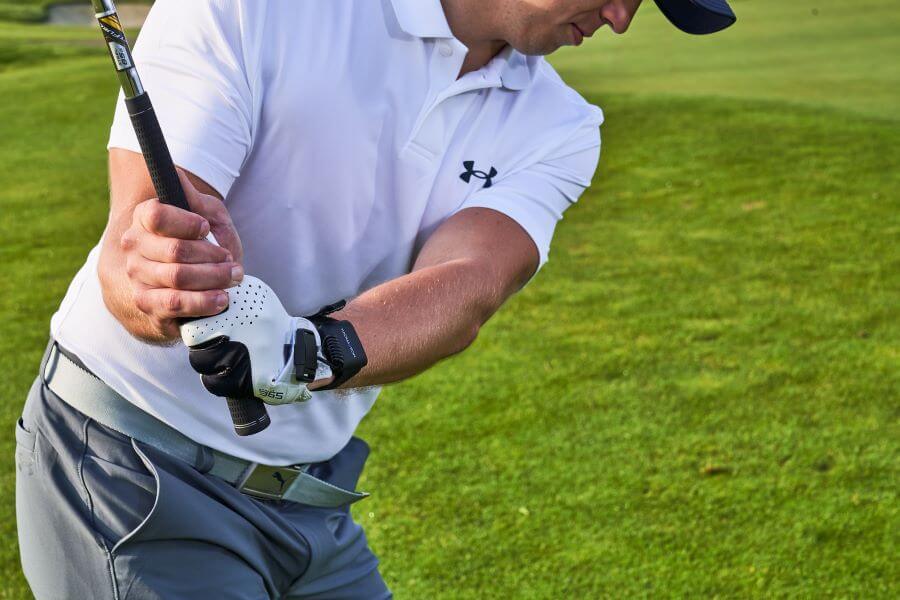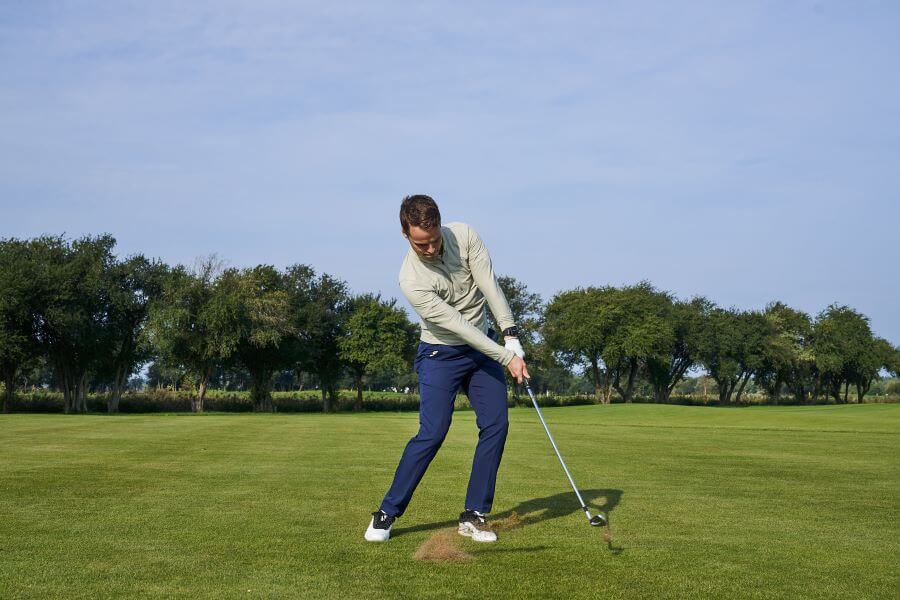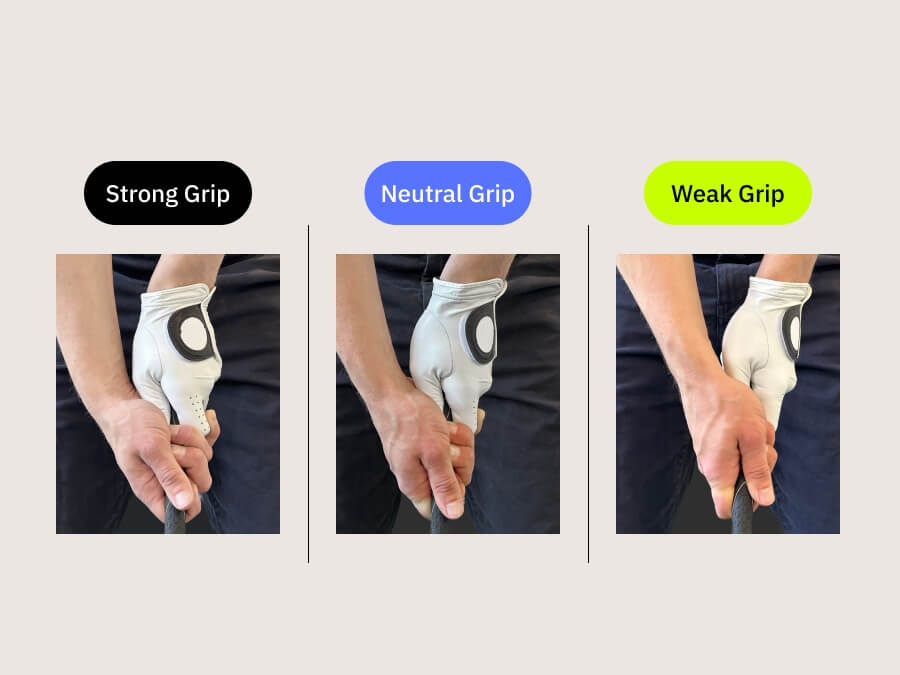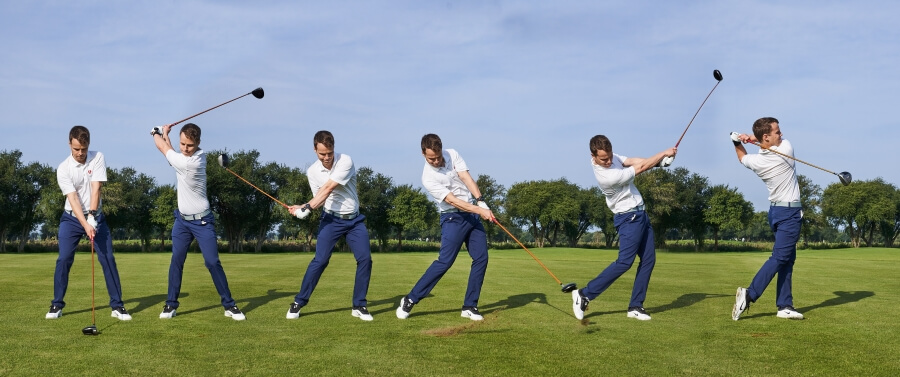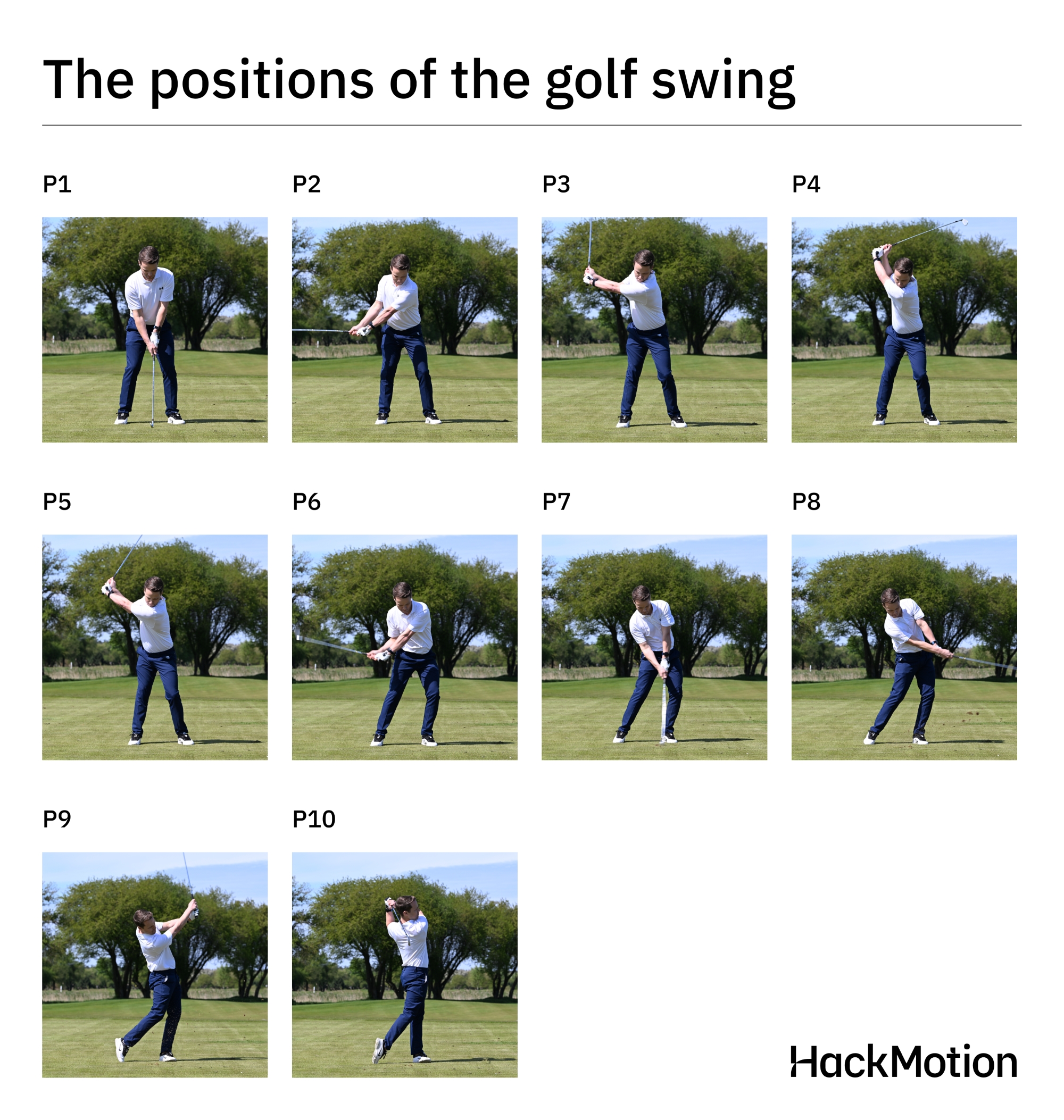How to Prevent Swinging Too Hard in Golf For a Rhythmic Swing
How to prevent swinging too hard in golf?
I find the easiest solution is to shorten your backswing and briefly pause at the top before transitioning into your downswing.
It leads to a smoother rhythm, increased hip and shoulder turn, superior balance, and a clean strike.
Besides my quick fixes, I’ll explain how you can slow down your swing by taking more club, using swing training aids, and easing grip pressure.
Once you have learned these solutions, you’ll be amazed to find that a slower, more rhythmic swing generates greater power and distance than a forced shot.
How to Slow Down Your Golf Swing?
- Take more club when in doubt to avoid forcing your shot.
- Reduce your grip pressure to maximize upper body turn and wrist control.
- Shorten your backswing to produce more hip rotation on the downswing.
- Try a single plane swing for more consistency.
- Increase your flexibility for optimal rotation.
Shortening your backswing and pausing briefly at the top is the simplest way to slow down your golf swing.
A shorter backswing gives you the feeling of restricted power, prompting you to activate shoulder and hip turn instead of relying on your arms to generate speed.
In addition, I find that taking more club and operating with a single plane are effective ways to promote consistency and eradicate forced golf shots.
10 Ways How to Prevent Swinging Too Hard in Golf
1. Always Take More Club
I’ll start you off with an easy one that has always worked for me, taking more club than I need. This changes my mindset because I know I have sufficient club behind me and can swing easily to generate a clean strike.
The perfect example is at my home course, where there is a 185-yard par 3 with water and bunkers in front of the green. I typically hit a 5-iron this distance, but the obstacles in front of the green alter my mindset, and I feel I need to force my shot to reach the dancefloor.
After depositing numerous golf balls into the drink and slicing the odd one out of bounds, I learned my lesson.
Now, I always hit a ¾ 4-iron on this hole, enabling me to swing easy and reach without trouble.
2. Lighter Grip Pressure
PGA Tour Pro Brandon Steele explains that tight grip pressure leads to tense shoulders and arms, restricting your ability to release the club on the downswing and clear it through impact.
In addition, when your grip pressure is excessive, it impacts your ability to rotate and generate sufficient power and speed.
As a result, you leave it up to your arms to produce that speed, resulting in a hard swing with limited rhythm and imbalance.
Operating with lighter pressure allows you to hinge your wrists from the top of the swing and guide the clubface to the ball.
There is no force, and you enjoy a smooth, rhythmic swing and a cleaner strike.
3. Shorten Your Backswing
Growing up, I attempted to replicate John Daly’s overswing, which caused me to lose balance and leave the clubface open at impact. Can you blame me? He was hitting the ball further than anyone it was worth a shot.
What this caused was too much of a swing with my arms and limited hip and shoulder turn. Instead of gaining power, I lost power.
At the top of my backswing, when I went past parallel, my lead wrist was incredibly extended.
When you wear your HackMotion, you will quickly learn that one of the key indicators of a great golf swing is when players do not add any lead wrist extension from setup to the top.
With this extended wrist at the top, it was nearly impossible for me to get the clubface back to square and my wrist back to a flexed position.
What did I have to do? I had to stop the club at parallel. At that time, my coach suggested that I shorten my backswing and learn to leverage the energy produced from enhanced rotation.
When you first shorten your backswing, it feels awkward as you think you cannot generate sufficient speed on the downswing.
However, my fears were allayed when I naturally started maximizing rotation for power instead of relying on my arms. This helped me develop superior rhythm, consistency, and cleaner shots.
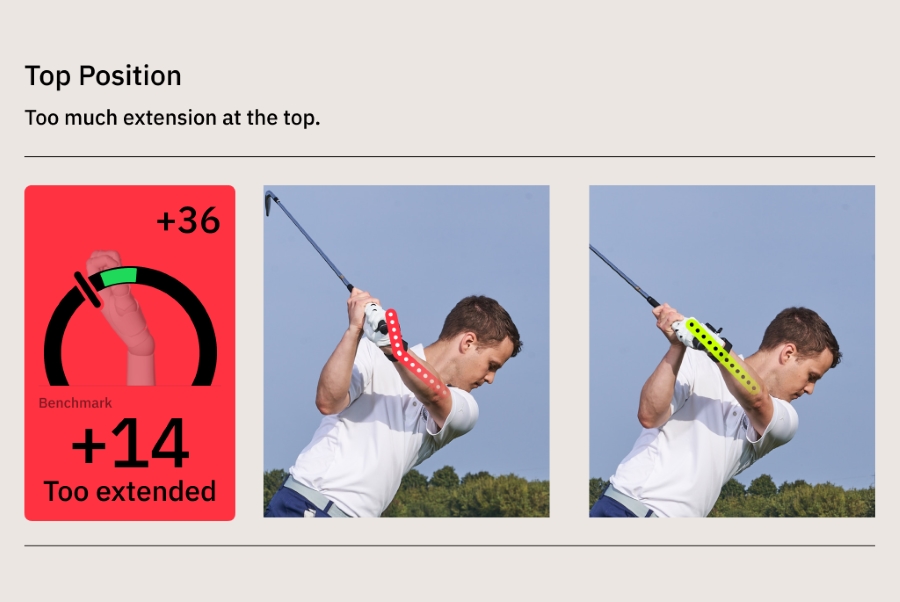
4. Getting The Right Positions
I think one of the most interesting concepts and ideas about swinging too hard in golf is the reasoning behind why we do it. What makes us swing so hard?
The answer is power.
It’s natural instinct to want to hit the golf ball as far as we possibly can. However, the better you get at golf, the easier it is to understand what actually creates power.
Power is created by getting the club in the right positions at the right time. I know that may sound overly simplified, but if you can wrap your head around this concept, you will get quite far in your ability to hit great golf shots.
The most important of all the positions in golf is the position of the clubface at impact. Golfers with a square clubface and a flexed lead wrist hit straighter, higher, and more consistent shots.
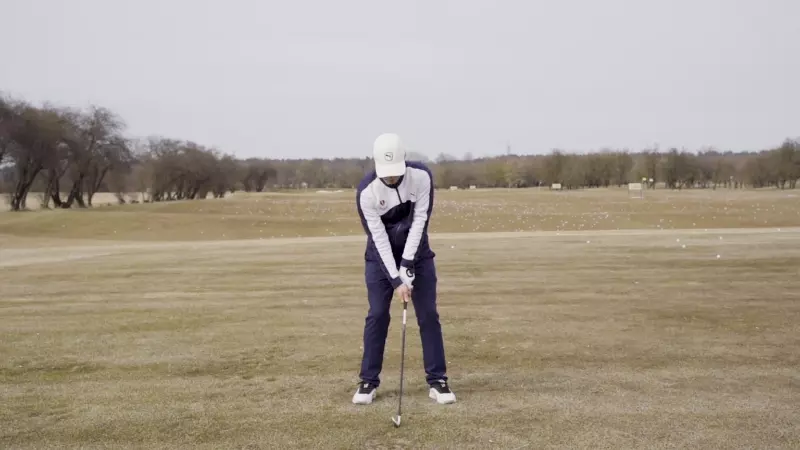
Even if you aren’t swinging hard, getting into the right position will get you that power you are afraid of losing.
Use the HackMotion device to make sure your clubface is square or close to square at the top of your golf swing. As you swing through the ball, ensure that you are moving from an extended position in the lead wrist to a more flexed position.
These proper positions increase your power, and they allow you to swing easier and more controlled.
So the next time you think about power, think more about position than speed. If you get into the right positions, you can accelerate through golf shots with speed, and it will produce impressive results.
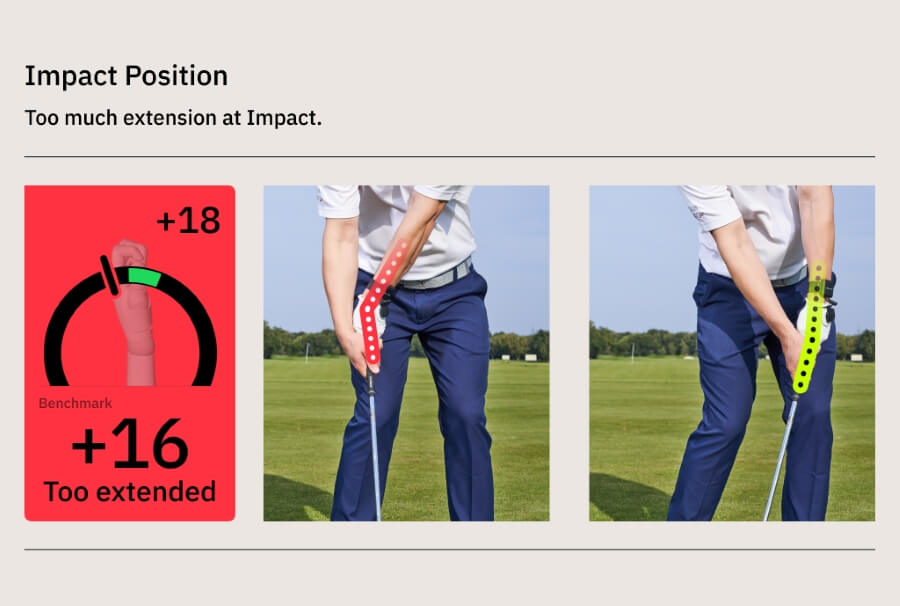
5. Break Your Swing Up
If shortening your swing doesn’t work, I recommend breaking it up on the range. This means you should pause at takeaway, the top of the swing, and before commencing impact.
I employ this drill on the range to help me identify where my club should be at each point of the swing.
Plus, I get used to the position of my shaft, clubhead, upper body, and hips from takeaway through impact to enjoy a superior transition from each point.
Address your ball and commence your backswing before pausing in the takeaway position.
Pay attention to the placement of your hands, arms, and upper body, and remember the feeling. Next, send the club head to the top of your backswing before halting there. Again take note of your bearings and remember the feeling.
The idea with this is to help you quickly identify when your upper body, hips, and golf club are not in sync. The final place to pause is once you’ve shallowed out the club from the top of the swing and are preparing your final approach into the contact zone.
After completing this drill, hit a few golf balls without pausing, and use muscle memory and sensation to get into the correct position.
You’ll notice you begin generating more rhythm and rotation and swinging easier than before.
6. Pause at the Top of Your Backswing
I don’t recommend operating with a permanent pause at the top like Hideki Matsuyama.
However, you can employ it on the driving range. Stopping at the top of your swing allows you to readjust and prepare for a smooth, powerful downswing.
I often employ this tactic when my rhythm is off and when I swing excessively hard.
Pausing at the top of the swing obliterates the momentum from my backswing, and I can boost my shoulder and hip rotation on the downswing for extra clubhead speed.
The more I practiced this drill, the better I understood that my clubhead velocity was prompted by optimal rotation and synchronization of my golf club and body.
Ultimately, it teaches you that speed and power come from rhythm rather than slinging your arms.
7. Optimize Shoulder and Hip Rotation
One of the issues in my early golf journey was producing sufficient shoulder and hip rotation during my swing.
As a result, I relied solely on the leverage of my arms to generate clubhead speed and ultimately delivered weak, erratic shots.
I am ashamed to admit that at that stage, my degree of hip and shoulder turn at the top of my swing reached 25 degrees. Compare that to Dustin Johnson’s 60-degree approach, and you can see why I struggled with distance and accuracy.
An ideal swing produces 45 degrees of hip rotation on the backswing and 90 degrees of shoulder rotation relevant to your spine.
The reality is that the average golfer will never reach these heights. However, it gives you an idea of what you can achieve with optimal rotation.
8. Single Plane Swing
My first golf coach was besotted with the late Canadian professional Moe Norman, who operated with a single-plane swing.
My coach appreciated this approach because it was easy to replicate and achieve consistency, and promoted cleaner contact with the ball for a superior smash factor and coefficient of restitution (C.O.R).
The improved smash factor and C.O.R. help accelerate ball speed and impact and achieve a pleasant launch without swinging hard.
Once you understand the physics behind timing and a clean strike, you’ll wonder why you tried to force the strike so hard before.
Instead of attempting to flatten the plane on the downswing, which confuses many amateurs, the single plane encourages a simple back, up, down, and through swing.
It simplifies the mission of inducing a rhythmic flow leading to a deliberate tempo and enhanced control.
To understand the flow of a single plane swing, I have provided a clip below from Norman’s mentor, Todd Graves.
9. Increase Flexibility
I have explained the importance of optimal rotation in helping you slow down your golf swing. However, your body must be flexible and rotate effectively on the back and downswing to achieve this.
There are plenty of stretches to boost your flexibility, but I will leave you with my three favorites. The first is the twisting stretch which stretches your thighs, lower back, and hips. Vital for optimal rotation.
Secondly, the scarecrow twist stretch helps you create unity between your shoulders and hips as you rotate.
It loosens up the upper and lower body to simulate the process of your backswing and downswing.
Finally, I find the piriformis hip stretch an effective routine to loosen up the hips for an optimal turn in your swing.
Following these stretches keeps your core golf muscles activated and flexible, essential for producing a cleaner turn and smooth rhythm.
10. Let the Arms Fall Downwards
In his famous book “How I Play Golf”, Tiger Woods explains that he prefers letting his arms fall downwards in front of the chest from the top of the swing.
When he gets his arms into this position, he can use the momentum from his rotation to send the club toward the ball.
When Woods reaches the top of his swing, he commences the downswing by altering his weight back onto his front leg. The combination of leg drive and rotation helps him build maximum velocity without forcing his shot.
Our HackMotion swing analyzer is one way to help your arms fall into place on the downswing. It trains your wrist mechanics for improved sequencing and control of the clubface. When your wrist action is optimized, you generate greater power from a fluid swing and reduce the need to swing too hard.
Summary
There is a fine line between swinging too hard and going after the ball with enough acceleration and power to hit a great shot.
It’s important that you understand the positives and negatives of swinging too hard. The key is to always be in control and never lose balance, stability, or consistency.
Use the HackMotion swing analyzer to tell you where swinging too hard is throwing off your game. You will quickly see that the ability to control the clubface is much more important than obtaining the highest swing speed levels.





